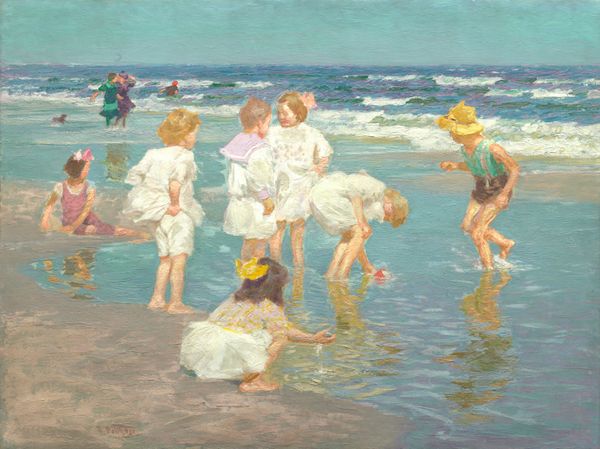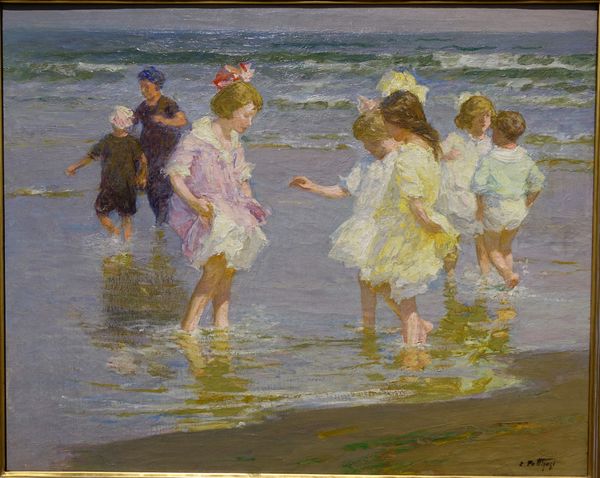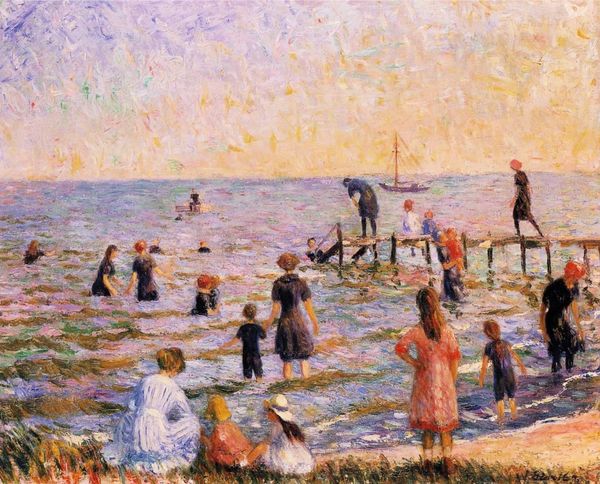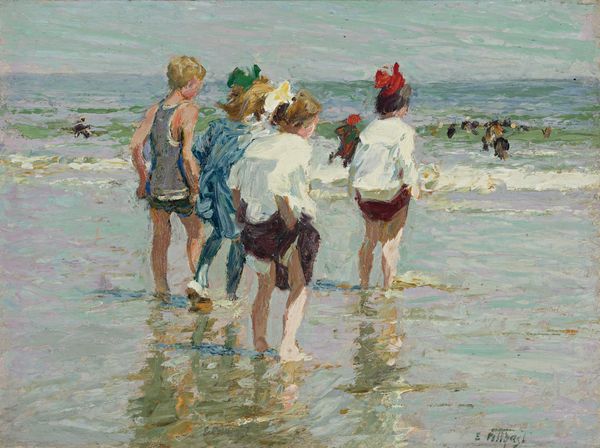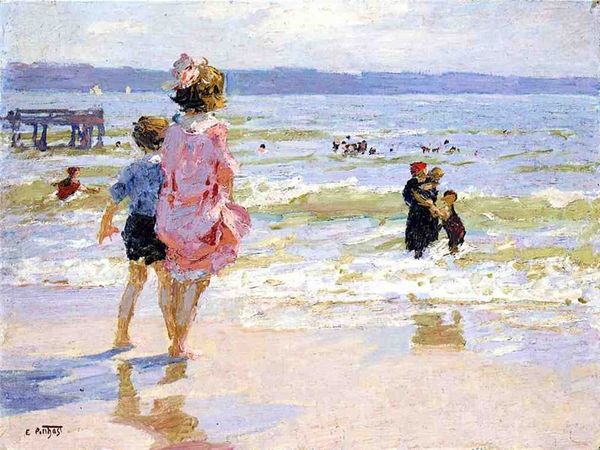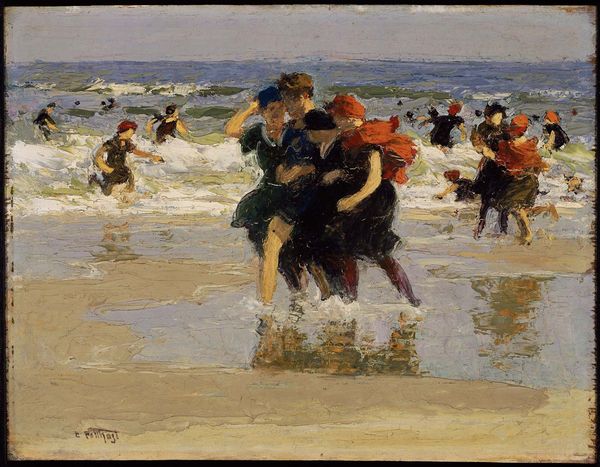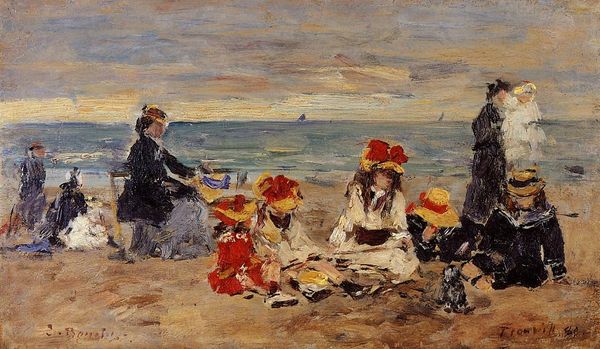
Copyright: Public domain
Curator: The breezy brushwork just gives this Edward Henry Potthast painting such an energetic feel. Titled "Happy Days," this piece dates to 1920 and exemplifies the artist’s adeptness at capturing leisure and light. Editor: Immediately, I’m drawn to the luminosity, especially the way the reflected light seems to dance on the wet sand. The loose, almost blurry forms evoke a carefree atmosphere. Curator: Potthast was a prominent figure in American Impressionism. We see here the characteristic plein-air style, focused on transient effects of light and movement in everyday life. This image depicts a bustling beach scene; the way the figures blend suggests a democratized leisure experience. Public beaches were increasingly popular social spaces during this time. Editor: That’s an insightful point about democratization. However, looking at it formally, the high horizon line really emphasizes the foreground activity. The brushstrokes themselves seem to mimic the scattered energy of the children playing, the water churning, creating a unified field of vision. It really guides the viewer through a temporal snapshot rather than offering any sense of perspective or single focal point. Curator: True, Potthast frequently chose scenes like these for their intrinsic appeal and marketability. His success depended not just on portraying these leisurely pastimes but selling them to an eager middle class wanting depictions of modern life. There is a level of historical agency here as it mirrors broader socio-economic shifts and expanding entertainment options for more Americans. Editor: The composition is also intriguing in the way Potthast deals with abstraction. The figures aren’t really delineated in a classical sense; they exist primarily as masses of color that suggest movement, almost proto-Abstract Expressionist gestures, albeit with an undeniably figurative anchor. What appear initially to be simply scenes from real life start to visually oscillate. Curator: Precisely, and these “happy days,” as depicted, are reflections of their period—moments in history meticulously articulated by Potthast to satiate popular demand for images that affirm American progress and aspirations during the roaring twenties. Editor: Analyzing it further, I appreciate the delicate balance achieved through this apparent simplicity; Potthast's composition not only celebrates ephemeral joy but also, unintentionally perhaps, pushes towards avant-garde aesthetics by challenging representational conventions themselves.
Comments
No comments
Be the first to comment and join the conversation on the ultimate creative platform.

